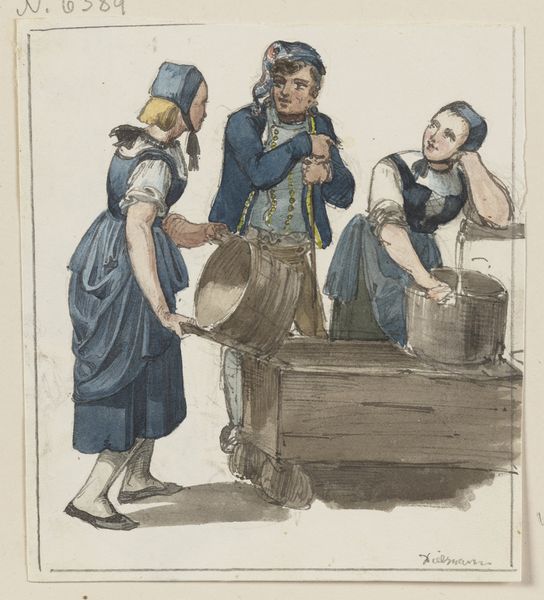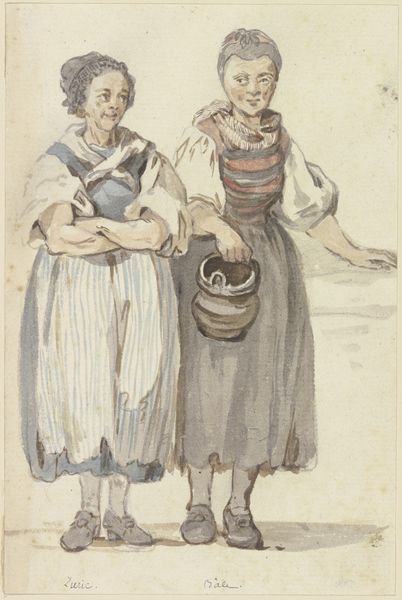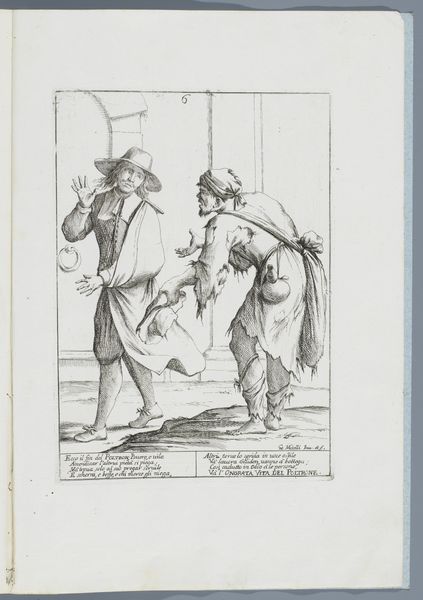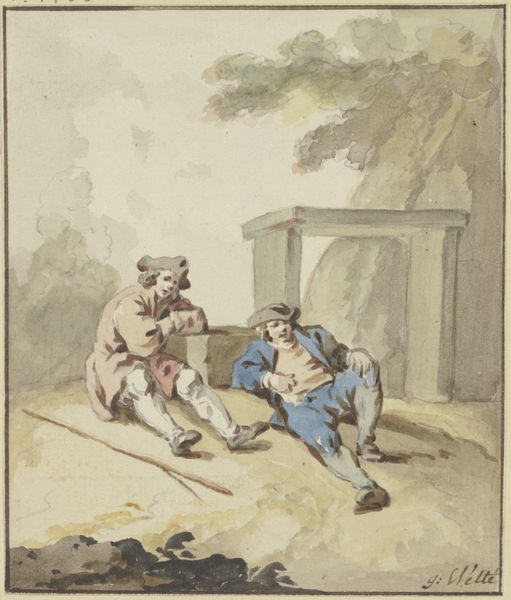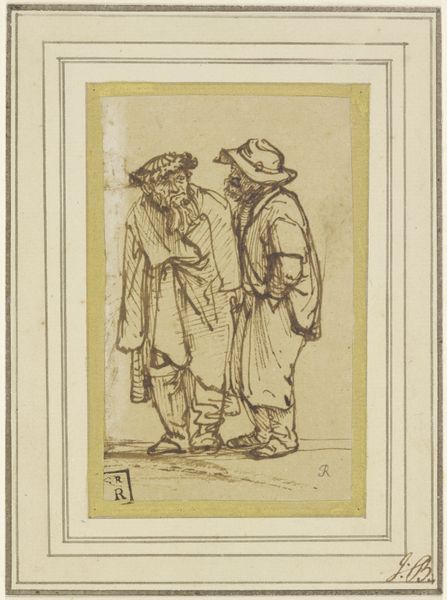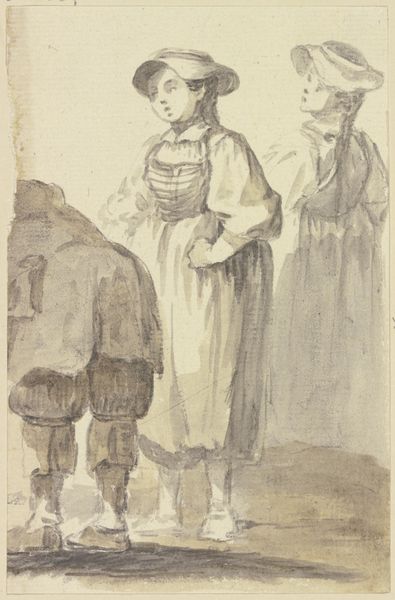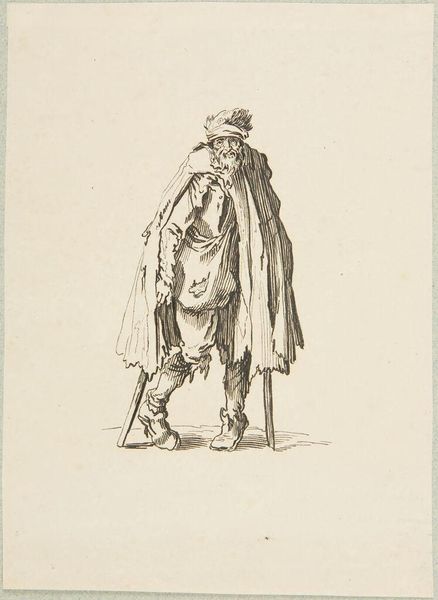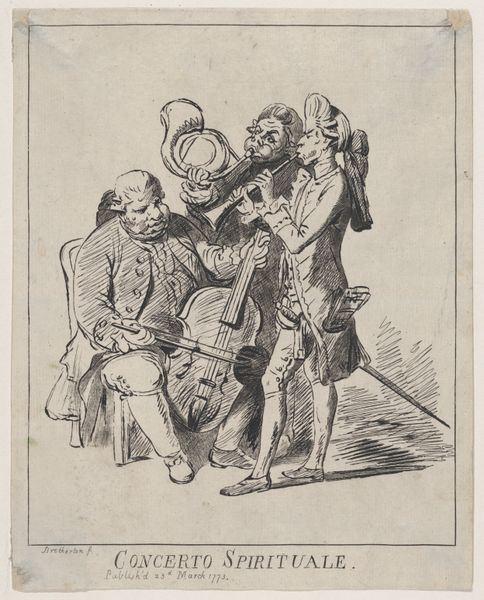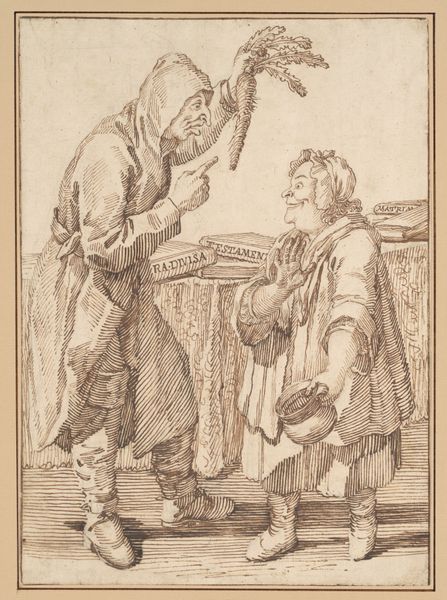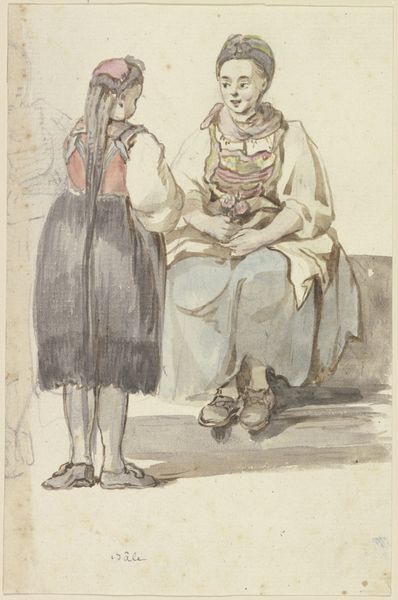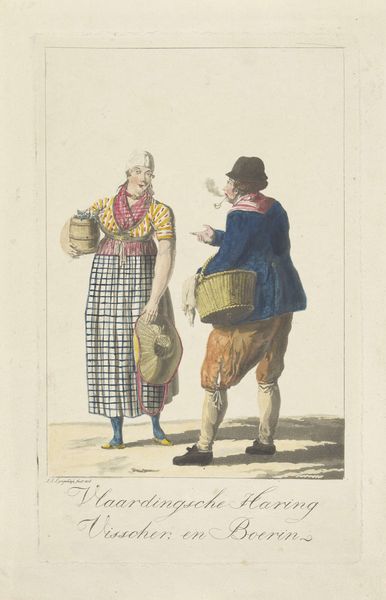
drawing, paper, watercolor
#
drawing
#
toned paper
#
16_19th-century
#
charcoal drawing
#
figuration
#
paper
#
oil painting
#
watercolor
#
coloured pencil
#
watercolour illustration
#
genre-painting
#
watercolor
Copyright: Public Domain
Curator: What a poignant scene rendered in watercolor, charcoal and colored pencil on paper! This piece, held here at the Städel Museum, is titled "Bettler kauft bei einem zerlumpten Fischweib einen Fisch," dating back to around 1834-1836. Editor: It immediately strikes me as harsh, but intimate. The skeletal figures, especially their gaunt faces, convey so much desperation in this minimalist landscape. Curator: Absolutely. Look closer, and you'll notice the tattered clothing of both the beggar and the fishwife. These visual cues indicate not only poverty but a societal commentary. Editor: The image serves as an allegory of society and how the fringes sustain each other when abandoned by institutional support. I wonder, how did Meyer's political and cultural leanings influence this depiction? Was it intended as condemnation or an acknowledgement? Curator: I'd lean towards acknowledgment of societal flaws rather than outright condemnation. Consider the fish itself, a Christian symbol. Is it possible that this moment, no matter how sordid, is also representative of basic human connection, even in deprivation? Editor: That reading is possible but so heavily muted. Fish, historically also represented wealth or sustenance—resources that were severely limited or unevenly distributed within a society quick to dehumanize an underclass. Curator: True, true. But if the piece stands alone as stark visual reportage of a moment, isn’t its strength derived from the pathos communicated via archetypal figures instead of nuanced political messaging? Even their tattered state could be interpreted as symbols. Editor: I respect that, yet the act of depicting them humanizes the pair—making it impossible to detach them from a politicized narrative in 19th-century Europe. These people represent lived injustices which transcends the aesthetic, no? Curator: You make a good case! Perhaps that friction of starkness and understated symbolism heightens our modern reception. The enduring theme underscores humanity—struggling to simply exist, symbolized by an economic exchange—which resonates no matter the historical or cultural climate. Editor: Indeed. Even now, seeing it through both symbolic and socio-historical lenses reminds me of the ever-present cycle and the need for tangible shifts in power, access, and memory.
Comments
No comments
Be the first to comment and join the conversation on the ultimate creative platform.
